There is a face Sharon Stone had. Or: it was a face she did, made. The face lasts for just two films in the early nineties, both written by Hollywood operator Joe Eszterhas: Basic Instinct (1992), Sliver (1993). Stone is remarkable in these two films, which are somehow the same film, occurring in a single symbolic system if not the same world. Sharon Stone does not play the same woman in both films, but both films concern themselves with reading and writing: Stone portrays a novelist and then an editor. These roles follow on the heels of a radically different Stone in Total Recall (1989). Stone had a less active face, there. It was tanned and flatter, slightly fleshier, fuller yet stiffer. In Total Recall she is clayey, athletic; wears a pants suit and is summarily executed (gunshot to the head). “Consider that a divorce.” (Or, as the line is actually spoken by Schwarzenegger, “Consida dat a divoarce.”)
A biopic explains the transformation of Sharon Stone on these terms: a great acting teacher. But for me there is something about the parallelism of these two early nineties thrillers that produces not so much “acting” as very carefully choreographed and highly significant posing on a small scale. (Indeed, the characters are more like allegories for the effects of writing and reading than actual women.) Stone, a former model, is plastic; her pale face often motionless, frozen, stony, even. Then: an instantaneous reconfiguration. She poses as writer, as reader. She is a model novelist and model editor, her facial gestures at once abstract and fascinating, meaningful though devoid of sentiment or sympathy, more textual than human. As when the police first appear at the home of Catherine Tramell in Basic Instinct: Catherine is seated on her balcony overlooking the northern Californian coast. It is late afternoon, the sun oblong, ready to sink. The police insult Catherine, “Are you a pro?” “No, I’m an amateur.” The face opens perfunctorily. It acknowledges the presence of an audience, winks, then slides beneath the horizon. It is a form, not an emotion. And because it is not really a face, but rather the creation of an actor, it can disappear even while remaining onscreen.
I’ve worked out the symmetry of this agile face. Eyes: horizontal diamonds. Nose: vertical diamond. Mouth: two coinciding diamonds. Symmetry upon symmetry. An eerily proportionate face that could be quickly cut from folded paper.
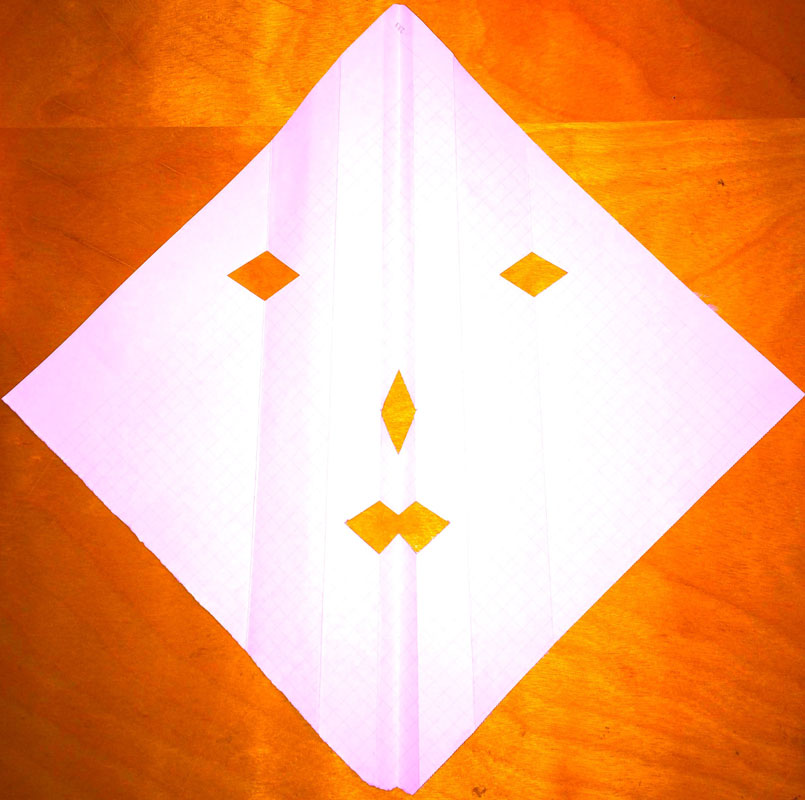
It is said that symmetry has a power that is not always just, not always “even.” Symmetry can be dislocating, can have multiplicative effects. As Henri Focillon writes in Vie des formes (1943), “[Form] is the strict definition of space, but also the suggestion of other forms. It maintains itself, propagating in the imaginary, or rather we tend to think of it as a sort of fissure, through which we make our way into an uncertain realm, neither fully comprehended nor thought, a flurry of images waiting to be born.” Symmetry could function as a kind of warning to the rationalist; we perceive it as comprehensible and recognizable, just before we see, as in a hall of mirrors, an infinite series of images, multiplying along the axis of symmetry. Georges Didi-Huberman: “…all symmetry awaits the event that will dislodge it in a single blow.”
The orderly face of Catherine Tramell is, then, a recognizable sign of the doubling that attends it. The face, I repeat, is orderly. (She is crossing and uncrossing her legs.)
- rectangular brows
- expressive teeth
- held gaze
- gentle lift
- dead laugh
- frank and placid
- bone structure revealed by age
- waiting (artificial)
- I’m a writer. I use people for what I write.”
- looking not listening
- focus all the way to the end of the sentence
- chin her largest feature
- eyes like checkmarks
- choice, before expression
- lines extend from her eyes
- eyes like saucers
- eyes that “tip”
- brows softly penciled in
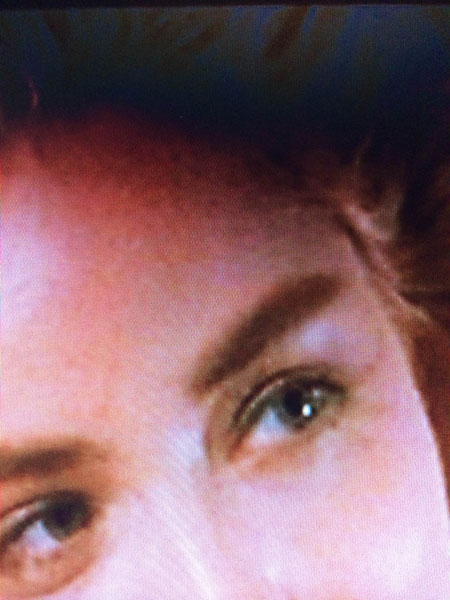
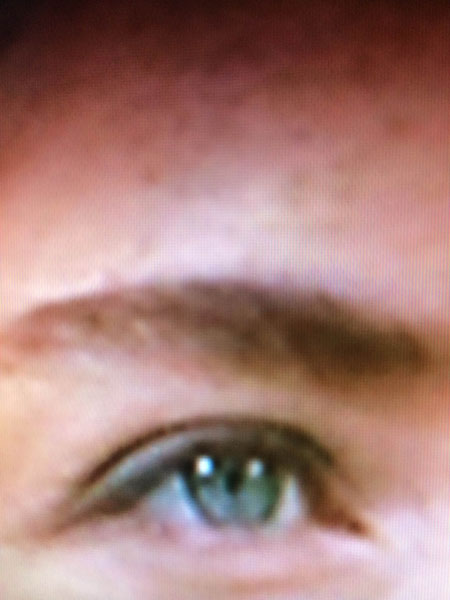
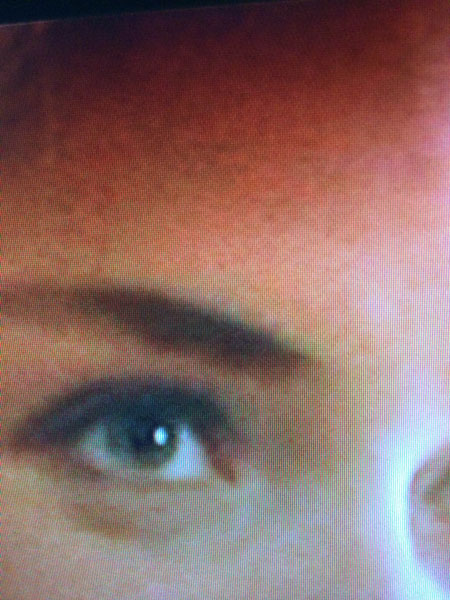
Catherine Tramell is a writer. In my reading of the story of her life, she, as a child, plotted and carried out the murder of her parents (childishly and out of curiosity, to “see if it could be done”), inherited millions, then became the author of a book about this crime. Perhaps the killing was, in some sense, a first taste of her identity as an artist. Though Catherine has learned her lesson (just because one has killed, does not mean that one must kill), she continues to take solace and significance from friendship and physical intimacy with others who have killed impulsively, “without knowing why.” These are usually women and they figure in her books, informing her heroines. This is, until Catherine meets “Nicky,” or “Shooter,” the Michael Douglas character, a male killer and her (apparent) Dionysian equal.
Basic Instinct’s Catherine is reflected and very nearly repeated in the film’s cinematic doppelgänger, or unacknowledged sequel, Sliver. Once again, Stone stars, here as an editor, Carly Norris, not a writer. 35 year-old Carly is in search of a “real relationship,” in which “something happens.” Details are vague. Carly is stalked by two men, one of whom is a writer and serial murderer (of women), an anti-Tramell himself, the other a gym-body multimillionaire with a deep-seated need to monitor the private lives of others and the technological means to do so, to cinematically fascinating ends. Many of Basic Instinct’s themes recur: confusion of narrative plots with murderous traps; the question of what kinds of knowledge can be reliably gained from observation, what physical intimacy means when not undertaken for the purpose of procreation. (And how we can control our relation to physicality, to the human organism—if our eyes will give us the means to do this, if images will give us this edge, if reading and writing will be of any help at all.)
Within this mirror world, a kind of Basic Instinct1, Stone’s face is a series of perfectly symmetrical ovals, wet-nosed and vulnerable and somehow always more active than the variously obsessed, implausible, and sometimes violent bodies surrounding it:
- patience with strangers
- rabbit-like
- furrowed brow
- freckles
- fear
- careful pleasure
- makeup-free
- sympathetic
- caution
- something perpetually deceives
- concentration in eyebrows
- face as decision
- face as sentence
- face as syntax
- barely moving smile
- sleep-walking
- smile pushes high into cheeks
- furrowed brows
- “trouble” of arousal
- careful makeup
- yellow hair
- joy and mistrust
Images to follow, but later (be patient).
* * *
What I have most wanted to say, in my poem-like lists above, for example, about Sharon Stone’s face is that—in its reactiveness, its excitability, its vows of weakness, its impenetrability—it reveals an idea about the relationship between agency and perception. My lists dart. They hop from expression to expression, eschewing narrative. Stone’s face is not like a novel, if it is writing. Sharon Stone’s face is not prose.
Stone’s genius was to have described a dialogic relationship using a single face—rather than two faces. She is—singly—a portrait of exchanges that would seem possible only between two people (or, between one person and a camera or, what is more pertinent to this essay, one person and a page). Her face seems always engaged in the act of deliberating the question of what should be done with perception, what the value of perception is and to whom—in its truth or untruth—it belongs: Human agency enters the phenomenal world in which it is rebuffed. We see it retreat and gather its forces. We see it learn. The face watches for the coming future in the present. The face has not yet happened, yet the face registers, reveals a response already. The face is soft. The face is quite literally soft, very soft. It gathers up something like force, the ability to be at once affected and affecting—and to display at the same time a third position: an awareness of this dynamic. The face is soft in that it displays the possibility of these multiple positions. It poses here very briefly. Now it is in motion again. It swims forward into, between, and among. It readies itself to be recognized.
I don’t know if this is acting. I don’t know how much this has to do with Eszterhas’s scripts. Sharon Stone’s face may itself be a kind of a manual or poem on the twin subjects of suffering and knowledge. “Soft core” was of course a genre expressly designed for women with disposable income at a certain recent historical moment, yet Stone does not depict merely or exclusively a fantasy of feminine control or passivity or desirability. She makes of herself a demonstration of a place beyond being moved or moving, not a detachment but rather the most intelligent kind of engagement. This has little to do with either screenplay or plot.
This is work, I tell myself, as I am watching. I don’t know if it’s a good thing—or even an appropriate equation. I can’t see the face of Sharon Stone (her “actual” face); I can only see the face she enacts, makes. Her acting is powerful because it becomes a metaphor for another activity, at least in my mind. In the weird mirror of these two Eszterhas scripts Sharon Stone becomes a figure. She is an arrangement of lines, a pattern. She is a figure for writing, a form that is writing’s reflection and/or twin.
* * *
Every writer has her own definition of writing. Easy to say this, but in fact it takes years to encounter the flexible echo that is a written word. I thought for a long time that I could control writing, that I could control and thereby make my own writing perfect. But in fact one comes to continually encounter writing; one encounters, not complete meaning, an object one could deploy, but rather a space in which meaning could occur, the weird zone of the subjunctive. Meaning will occur but the writer cannot perfectly control this meaning, only the conditions in or under which this meaning may happen. The time before writing and the time of writing are essentially the same. (One approaches.) The only difference is, after one has written.
I read somewhere that when Joe Eszterhas was ready to sell Basic Instinct he shopped around a script that was messy and heavily marked, what looked like a work in progress—though it was in fact a highly polished, carefully edited and complete work. Eszterhas had done all he could to control the story of Basic Instinct but presented the script as something shared previous to completion, a hasty guess. (This reminds me of the time I successfully subletted an apartment on very short notice by cleaning it assiduously and then apologizing repeatedly to the acquaintance who came to see it—for the first time, I should add—for how messy it was.) There is a period of time in looking or reading during which the one encountering a text can’t be prepared for what he or she sees. It is this early time that the writer can control, even if she cannot fully control the words. This is a writer’s advantage.
I think, too, that this is what Sharon Stone means, what her face means in these films. It is in this space that Sharon Stone is an actor working. Her face works here. She plays upon anticipation, which is to say, the difference between the known and the unknown. The police are slower than she is. The readers and the watchers and the psychiatrists and the predators and all the other performers are too slow. If we are watching Sharon Stone, we feel—often to our joy—that no one else on screen is doing anything.
* * *
In Basic Instinct everything has already been written; this is the source of our interest in the plot. If novelist Catherine Tramell lives up to her reputation, she has not only authored the murder of her parents, she has authored the conditions which led to the series of murders perpetrated, the screenplay would have us believe, by Jean Tripplehorn, her double/rival/former lover. In this sense the world in which cop Nicky/Michael Douglas operates has long been a road that leads to Catherine. His whole life in the field of enforcement has been readying him to encounter her. Has she even authored, in some sense, the unforced murder of tourists Nicky committed years ago? It recurs in her newest book, in which Nicky/“Shooter” also “falls for the wrong woman.” “What happens?” “She kills him.” But it will only be further proof of the power of fiction if in “real life” (i.e., the “real life” of the film) Catherine Tramell does not murder Nick. For one of the most satisfying aspects of Basic Instinct is Catherine’s strange vulnerability. Her friends die so frequently—as she herself observes, grieving the loss of her possessive girlfriend Roxy, “Everyone I care about dies!”—that she is both often in mourning and often under threat of legal penalty. And while she toys with the police, famously inviting them (and us) to examine her blond pudenda, she cannot so easily escape the presence of death. Figuring in both her life and her novels with a nearly campy frequency, death is either the central term in Catherine’s philosophical system or it is the character to end all characters. As the rising body count attests, death takes lives but will not take reliable human form. Though both Catherine and the larger film claim to want to portray humanity’s baser and/or “basic” instinct, i.e., to kill—and be killed—what is more concertedly at stake is the problem of giving death some sort of plastic form, since it stalwartly refuses to retain such a form or otherwise explain itself. (Presumably Catherine’s novels are designed to address this difficulty, though most of what we know of them consists of hearsay among cops and other experts in the workings of the criminal mind or brief shots of lurid cover art.) We often have the feeling, as we are watching Basic Instinct, that we are being asked to like, even to root for, something dangerous and possibly destructive, something that we really should not like or want to win out in the end. However, we never learn whether this thing is evil or desire or death itself, or simply a lie told by a woman.
And then there is Stone’s face. The responses and emotions it conveys throughout Basic Instinct have a curious form, since, as we all know, Catherine Tramell is a giant walking clue. Is Catherine lying? We know that all of Catherine’s life is devoted to the literary depiction of something that cannot be given definitive form. What does Catherine then show or make when she responds, when she protests, reacts? She shows, naturally, the fundamental incompleteness of her project of depiction, of her career as artist. Does Catherine lie? It seems very likely that Catherine would not hesitate to lie, but throughout the film we’re made to feel that she never does lie, that she does not in fact need to lie.
* * *
Sliver, meanwhile, is a characterless film. Where Basic Instinct is noir, Sliver is a movie about New York real estate and how one makes money in the absence of a film industry. The sex scenes are extended CK underwear or cologne advertisements, interweaving carefully choreographed shadow play with near-stills of gripped hands and facial ecstasy.
Carly Norris is not a writer. Carly Norris is a powerful editor. She has her own office and toadyish wing-woman. Carly reads. And she is a more intelligent reader than most. And this, Sliver wants us to understand, is why she does not die, even if she does suffer. Carly is an editor of tell-alls. She understands prurience and crime.
Because the film is so focused on emotional suffering (mostly verbal threats rather than physical ones), its sex scenes require much of Sharon Stone’s face. There is a divorce somewhere in the background, a minor source of anguish. Carly was married but it was a waste of her time. (Her nose wrinkles in disappointment.) For purposes of plot, Carly meets her temporary match in a sinister Adonis obsessed with surveillance. Portrayed by plush-chested Billy Baldwin, this voyeur, like Carly, is a connoisseur of prurience and crime. At Sliver’s denouement, Carly clumsily gains control of her lover’s elaborate video surveillance apparatus—which is also subject to constant editorial revision by means of a remote control. She destroys it and tells him (he is beside himself) to “get a life,” advice she would presumably also give herself. For there is a price to be paid for possession of the kind of knowledge that allows one to evade death in this screenplay. The editor reads insatiably, passionately, nearly miserably, and to the exclusion of much else. Someone capable of happiness in the world of Sliver would, perhaps, simply have succumbed.
On the matter of survival, there is a joke early on. A starchy Manhattan real estate agent shows Carly the bedroom of what will become her condo. “It’s a nice room for—,” the real estate agent pauses, afraid the next word that will be heard will be “fucking,” no matter what she in fact says. The agent concludes, “Reading.” “Yes,” Carly smiles politely. Her response is basically warm, “It is a nice room for reading.” The agent has named the very activity in which Carly takes the greatest and most risky kind of pleasure. In reading, Carly recognizes and identifies the objects of her fear. She is a highly literate thrill seeker, someone who enjoys terrifying herself with glimpses of psychological horror. And as a professional reader, Carly has come to be able to control what she sees not just in written texts but also in the phenomenal world. She is able to redact, to block things out, and also to aim her (literally) probing gaze with enviable precision. She moves around Manhattan, in and out of the world of her job and the world of her new condo, in this fashion, uncovering hidden ills, cruelties, missteps. She likes to watch. She renders herself safe by means of myopia. She blithely scrapes away the concealing palimpsest of Sliver’s mediocre plot at the points of its most gruesome and/or salacious activity, yet she ignores broad swathes of her daily existence. The film seems to want us to believe that internally Carly is either a kind of permanent wound or, what is more likely, simply empty, null, beige, and therefore voracious for content.
“I don’t want to get hurt,” Carly Norris maintains. “You’ll see,” she says, meaning, I don’t want you to see [me]. “You’ll see,” contains the kernel of an impossible wish, an idea expanded in all of Sharon Stone’s elastic, ingenious facial gestures and erotic grimaces throughout the film: Know more than I tell you, know my soul without seeing it, know my thought without hearing it; see nothing, read nothing, learn nothing, know nothing—yet know me. I am your reader. I am present and available. I am attentive, delving, and continuously interested. I look very interested, very stirred by my own interest, yet beyond this interest, this work I do, I lack any permanent—and, therefore, reliable—perceptible quality. What you see in my face is merely my profession. My face is a work, a lyric of a kind though not a feeling. My face is work, which is something distinct from a lie.

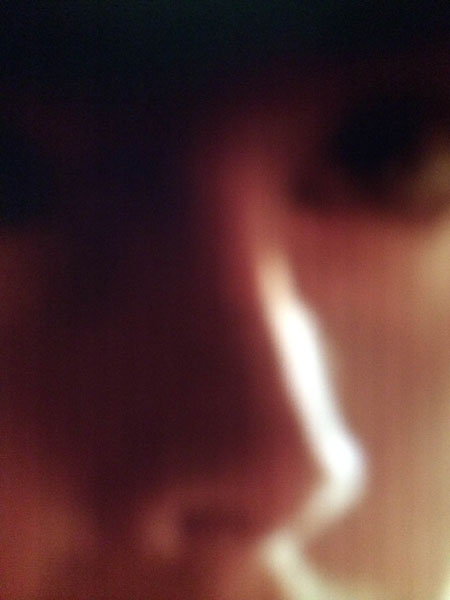
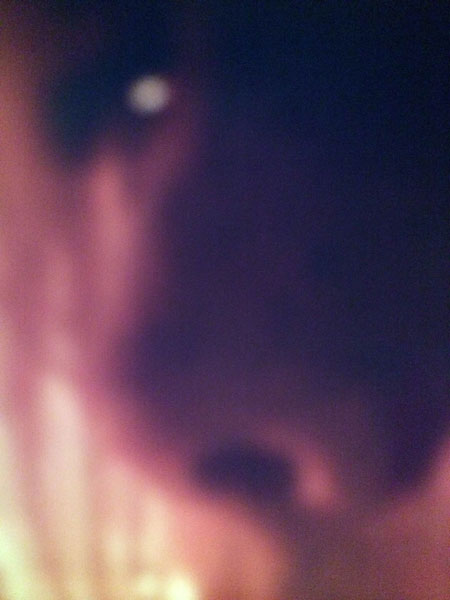
Basic Instinct and Sliver are, despite their long, slow nods toward pulp and genre, fairly literary films. In writing this, I don’t mean that these are films about literature’s “great themes,” that these films treat humanism’s eternal cherished questions. They aren’t even very effective at describing human psychology. Rather, these are films about reading and writing. They enact a kind of minimalist phenomenology of the literary surface: They describe looks and guesses, uncertainties and misapprehensions, the strangely plastic substance that is meaning—each focusing on a poem-like face.
It is hard to say whether it is a stroke of luck that Sharon Stone was cast as she was. “Who or what will recognize these faces, this amazing face in motion?” someone—perhaps Eszterhas himself—always seems to be asking, whenever Sharon Stone appears. I don’t even know if I want to call this work, if I really think of this face as “accomplishing something.” Maybe it is more accurate to say that this created face is an undoing, an opening to the italicized possibility of doing or completing, a sort of subjunctive fissure, through which we make our way into an uncertain realm, neither fully comprehended nor thought. Images are very good at teaching us about such gaps, even as they do the allegedly simple task of describing the physical world, after a more or less objective fashion. Images, like lies and poems, are good at pointing us in the direction of voids. And images in motion (film, video, digitally animated stills, etc.) can be a source of pleasure precisely because they lack the spatial and temporal continuity of the physical world. They may additionally remind us of the pleasurable incommensurateness of written language, in its own relation to physicality.